How to Make Potting Soil for a Lemon Tree — 8 Simple Steps
-
Ed Malaker
- Last updated:
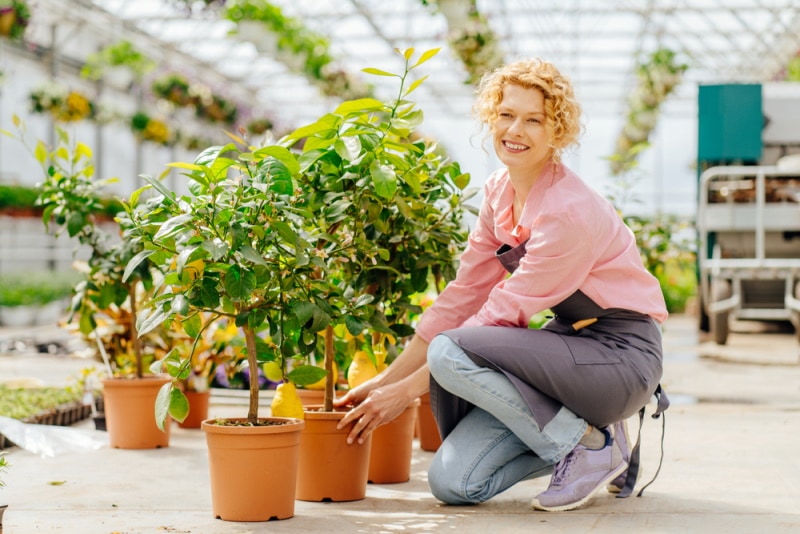
Lemon trees grow well in pots, so many people like to keep them indoors. However, finding the right kind of soil can be tricky, and using the wrong kind can slow growth or even cause the tree to produce less fruit. Fortunately, creating potting soil for lemon trees is not difficult and only requires a few items. Keep reading for a step-by-step guide to creating potting soil for a lemon tree at home using common ingredients that you might already have, so you can have a better experience and get a larger harvest.

What Kind of Soil Is Best for Lemon Trees?
Lemon and many other citrus trees enjoy a well-draining loamy or sandy soil that contains plenty of nutrients. The soil that you make should be loose and fluffy, with a slightly acidic pH of 6–7. The color should be dark, and you should notice a rich earthy smell, which tells you that it’s ready to use.
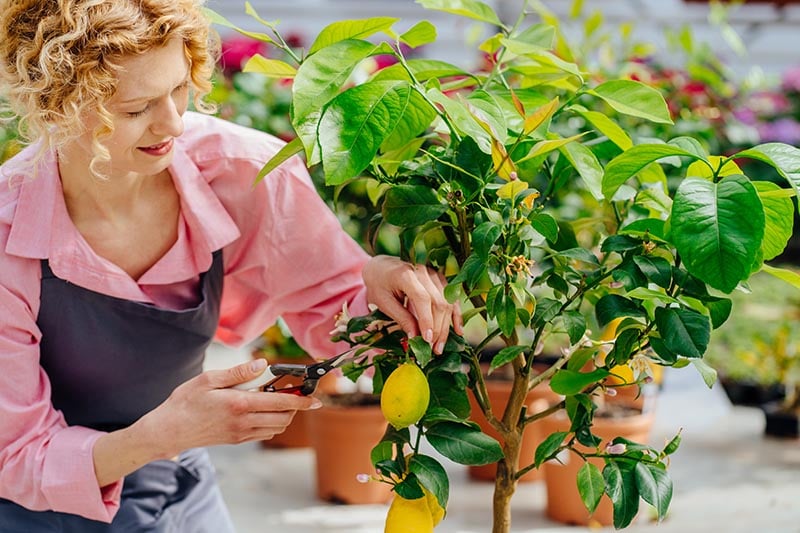
Before You Begin
Before you begin creating your lemon tree potting soil, we recommend getting your materials and supplies together. For this project, you will need equal parts sand, peat moss, perlite, and compost. You will also need a large bucket or pail to hold your potting soil as you make it, and it will help you store it if you don’t use all of it. Peat moss can also irritate the skin, so we recommend wearing a good pair of gardening gloves while mixing and working with the soil. You may need a small shovel to help you move the dirt around.
- Coarse sand
- Peat moss
- Perlite
- Compost
- Gardening gloves
- Large pail or bucket
- Small shovel
The 8 Steps to Make Potting Soil for a Lemon Tree
1. Add the Peat Moss to the Large Pail or Bucket
The first step in creating potting soil for a lemon tree is adding peat moss to the large bucket or pail. Once you add it, stir it up well so there are no clumps. Peat moss is well-draining but holds moisture so it is more consistent throughout the day. Peat moss is also slightly acidic and perfect for the lemon tree, which prefers soil with a pH below 7.
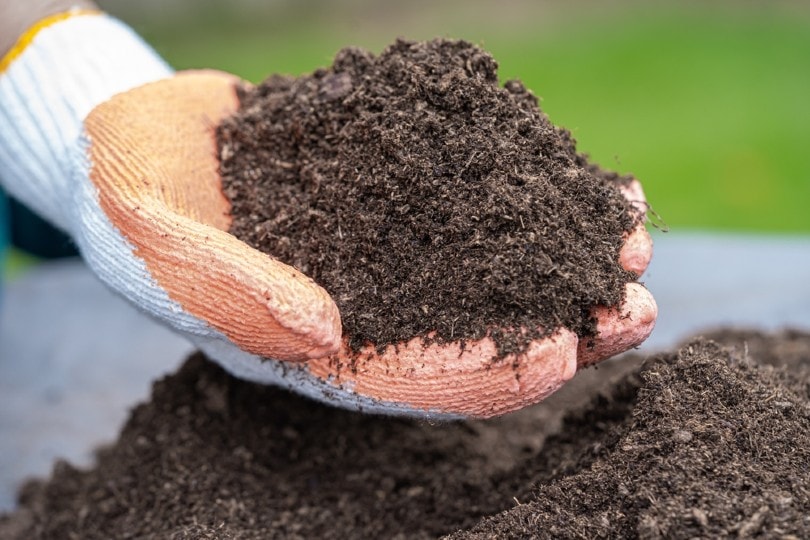
2. Add the Sand
After you break the peat moss, it’s time for the sand. Add small amounts at a time, and stir it well to ensure that the sand has an even distribution throughout the peat moss. Mixing with your hands is ideal because you have more control, but be sure to wear protective gardening gloves. Sand will help the soil drain better without changing its nutritional value. It might also make it slightly more acidic, which is good for the lemon tree. We recommend coarse sand because fine sand can clump together and become compact, preventing root growth and even stopping water from draining out of the pot.
3. Add the Compost
With the sand distributed evenly throughout the peat moss, it’s time to put in the compost. Add it slowly, mixing continuously to distribute it evenly. Compost adds important nutrients to the soil that will help the lemon tree grow faster and produce more fruit. Compost also breaks down slowly, so it continues to add nutrients as the plant grows.

4. Add the Perlite
The perlite is put in last because it is easy to see, so you will know when you get the mix even and consistent. It helps increase drainage without changing the soil’s pH or nutritional value. It’s a type of lightweight volcanic glass that won’t break known.
5. Prepare the Pots
Many people recommend adding sticks, bark, grass clippings, and other small pieces of organic material, along with pebbles and small rocks, to the bottom inch or two of the pot. Doing so will help improve drainage and prevent water from building up at the bottom, which can cause root rot. The organic materials will also break down slowly, releasing important nutrients that the lemon tree can use.
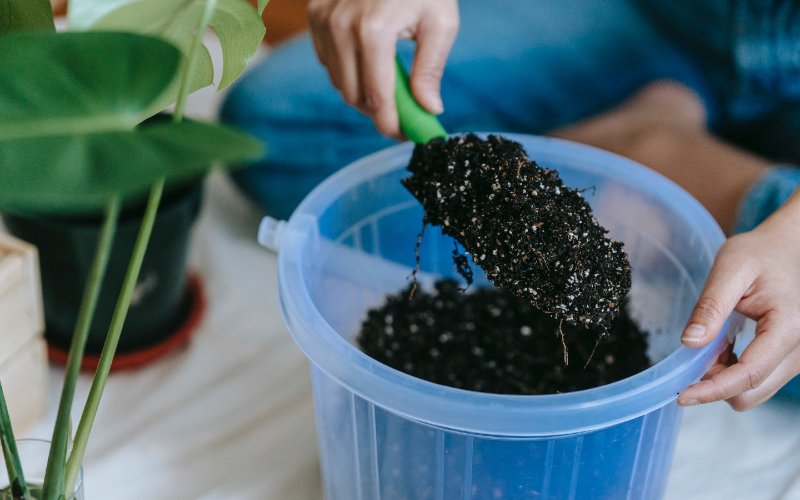
6. Distribute the Soil
Now that the soil is mixed, you can begin to distribute it to the pot that you will use to grow the lemon tree, covering any of the organic materials added in the previous step. Fill the pot, but don’t pack down or compress the soil as you work.
7. Plant
When planting your lemon tree, ensure that the soil covers all the roots but isn’t so high that it might spill over the edge.
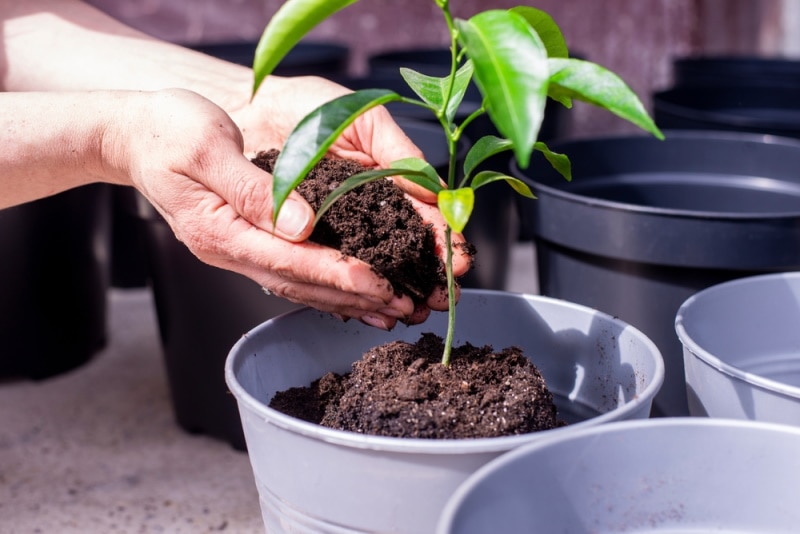
8. Replant
Replant your lemon tree every 3–5 years to prevent the tree from becoming root bound and to replenish the nutrients in the soil. Replanting will encourage faster growth and may yield a larger harvest after a slight setback.

FAQ
Can I use coconut coir instead of peat moss?
Yes. Coconut coir makes an excellent potting soil base. However, it isn’t acidic like peat moss, so you might need to use a soil test kit to check the pH and add aluminum sulfate as necessary to reduce it to between 5.5 and 6.5.
Can I use worm castings instead of compost?
Yes. Worm castings will work just as well as compost, but they can be more expensive and harder to find. You can also make DIY worm castings, but a DIY compost heap can provide more advantages, like recycling table scraps.
Can I grow my lemon trees on the patio?
Yes. As long as the soil is well-draining and there’s plenty of sunlight, a lemon tree will grow well on the patio. However, if you expect the temperature to drop below 29 degrees Fahrenheit, you will need to bring the tree inside, as colder temperatures can cause permanent damage.


Summary
Creating potting soil for your lemon tree is not difficult and only requires mixing a few ingredients. The soil that this plan creates is well-draining and will provide important nutrients that will continue to feed the tree until it’s time to re-pot it. If you are sensitive to peat moss and would rather use coconut coir, use a soil tester to check pH and add aluminum sulfate to make the soil more acidic as necessary.
Featured Image Credit: Iryna Inshyna, Shutterstock
Contents